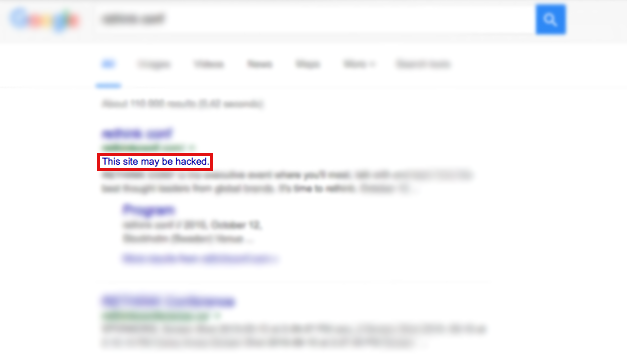
The API vulnerabilities nobody talks about: excessive data exposure
TLDR: Excessive Data Exposure (leaking internal data via API responses) is the silent, pervasive threat that is more dangerous than single dramatic flaws like SQL …
Linus Särud
You might have noticed that Google occasionally flags some websites with a “This site may be hacked”-flag or a “This site may harm your computer”-flag. This is bad for your business because it could scare away potential customers, as Google’s recommendation is to avoid visiting flagged sites.
This guide explains what the flag means and how you can remove it.

If a website is flagged, it has served either malware or spam advertisements recently. We can assume that is not your intention, and therefore the only logical assumption is that someone has hacked you.
It is also possible that you have not been hacked, but instead an advertisement company having serving advertisements on your website.
For those who prefer to watch and listen, here is a Youtube video from Google explaining their flagging system:
So, you have identified you have been hacked. What now?
If anything is unclear, do not hesitate to contact us at support@detectify.com and we will help you as best we can.
Additional resources/links
Google Search Help

TLDR: Excessive Data Exposure (leaking internal data via API responses) is the silent, pervasive threat that is more dangerous than single dramatic flaws like SQL …

TLDR: We successfully migrated our core RabbitMQ messaging infrastructure from a self-hosted cluster on EKS to managed Amazon MQ to eliminate the significant operational burden …